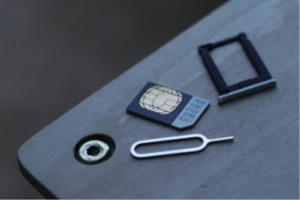The SIM card is a technology that most of us are familiar with, present in mobile phones since the early nineties. A SIM card is a piece of hardware which contains data that authenticates us with our mobile operator, enabling us to connect to a network and receive a mobile connection.However, in the future, a huge array of connected devices will connect to mobile networks without the need for a SIM card, thanks to embedded SIM (eSIM) technology.
Yuval Mayron, general manager, IoT at Amdocs, discusses how eSIM is supporting a huge variety of connected technologies across the consumer and enterprise markets.
eSIM is a global specification developed by telecoms trade body the GSMA, which involves a SIM card chip being embedded into a device. Due to Apple’s latest iPhone launch, eSIM technology has been thrust into the public consciousness. One of the main advantages of eSIM is that it enables users to change operator remotely, straight from their phone, without having to acquire a new SIM card. It also allows people to store multiple profiles on a single device, effectively having two or more numbers, and switch between them at ease. This is ideal for anyone that may require an additional number for travel or business, for example.
Mobile operators are now starting to support eSIM technology, including EE in the UK, Vodafone in Germany, and Bell in Canada. As an increasing number of devices offer eSIM technology, we are likely to see more mobile operators offering support for the service, particularly as it gives them an opportunity to up and cross-sell new service plans to their customers across the consumer and enterprise markets
New opportunities in the connected things market
eSIM technology will not just be used in smartphones, but also in a range of consumer devices which require always-on connectivity. This includes wearables, such as smartwatches and smart glasses, connected home devices, and computing devices such as laptops and tablets. Technology which has traditionally connected to Wi-Fi will benefit from the wider availability and security of cellular (4G) networks.
As eSIM enables subscribers to connect more devices to their mobile operator, operators can offer multi-device packages and bespoke data plans. With eSIM, device bundling will become much easier, with consumers able to conveniently add new devices to their plans without having to go in store or wait for a physical SIM card to arrive in the post. In turn, this presents new revenue opportunities for mobile operators, as their customers scale-up their plans by adding new devices which require data.
Businesses with a large number of mobiles used by their employees will also benefit from the convenience of eSIM. eSIM can deliver a streamlined user experience for managing cellular connectivity, enabling IT teams to provision and deploy new devices in a rapid and convenient fashion. Adding new phones to a corporate mobile service, or swapping devices between users as they join and leave a company will become much more efficient, as it can be achieved remotely. Profiles for each user can also be personalised and data plans can be adjusted and optimised, via eSIM remote management tools.
eSIM will also benefit businesses that use IoT systems, and in particular businesses that have large scale machine-to-machine deployments such as oil and gas, power plants, manufacturing facilities and warehouses. If, for example, a company uses thousands of individual pieces of hardware that require mobile connectivity, it involves installing a SIM card into each unit, which would be a painstaking task. With eSIM, businesses can remotely connect all of this technology to a mobile network. Furthermore, if the technology is required to operate in another country, it can be programmed remotely to connect to a local operator in that region.
eSIM uses less space and is cheaper than traditional SIM technology. This means that mobile connectivity can now be introduced into hardware where it was previously not feasible due to cost or space restrictions.
Finally, as with the consumer market, operators can create new data plans for businesses as their connectivity requirements scale up. This could include new packages for previously unconnected devices, such as connected cars or iPads, naturally resulting in new revenue streams.
Driving eSIM adoption

eSIM adoption by consumers and businesses will partly down to technology manufacturers and their ability to support the new technology. According to Orange, all new smartphone devices will support eSIM by 2030, and other types of connected technology will likely follow suit.
Equally, it is the operators’ responsibility to ensure they can support the technology on their networks and provide a smooth experience for business and consumer customers looking adopt it. Operators should aim to create a new experience for onboarding customers using eSIM, via an online portal or application. These applications can be developed specifically for a business, whilst offering more mainstream portals for consumers.
For this customer experience to be seamless, operators must ensure that their eSIM technology is compatible with a variety of different handset manufactures and eSIM vendors, to ensure they can support multiple download and activation methods. This will also enable full visibility and control for a customer service representative, who will need to provide care and support for a digital entity.
To achieve this, operators must evolve their billing support systems and own an orchestration platform which will empower them with advanced eSIM management capabilities. This will ensure that they can make it as easy as possible for users to adopt eSIM technology, which will help drive new uses cases for it across the consumer and enterprise markets.
The author is Yuval Mayron, general manager, IoT at Amdocs.
Comment on this article below or via Twitter: @VanillaPlus OR @jcvplus






